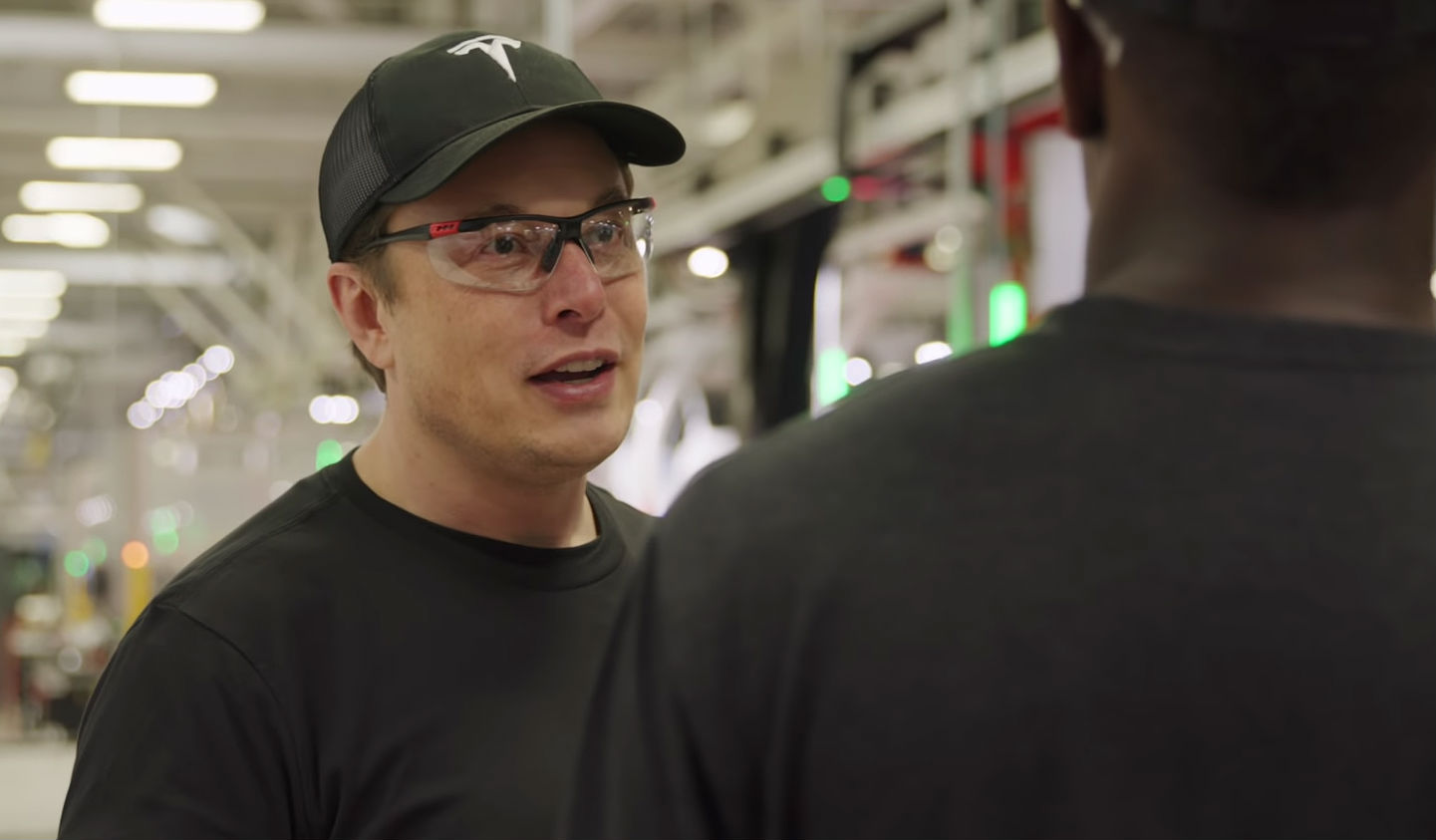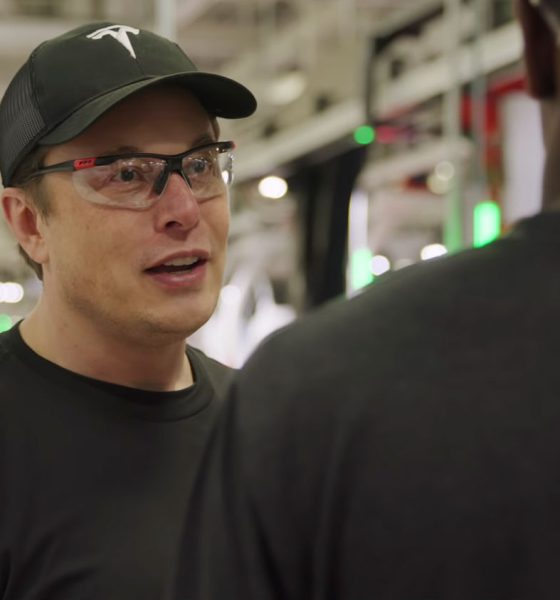

News
Tesla’s monster rally propels Elon Musk past anti-EV oil baron Charles Koch in net worth
Tesla stock has been on a tear recently, with the company receiving a boost from its stellar second quarter delivery numbers. But even before TSLA shares hit new all-time highs on Thursday’s intraday, the electric car maker’s rise ended up pushing CEO Elon Musk a bit higher up on the Bloomberg Billionaires Index, thanks to his net worth of $53.4B as of Thursday. With this, Musk actually ended up surpassing the net worth of the US’ premier oil baron, Charles Koch, who is listed in the Index with a net worth of $51.5B.
As of Thursday, Musk stands as the 16th richest person in the world. Koch, meanwhile, stands as the 18th on the list. Granted, Musk’s net worth is tied directly to Tesla and SpaceX’s valuation. However, Musk’s rank today does stand as a symbolic victory for the CEO, considering that he and Koch could not be any more different with regards to their stance on the environment.
Charles Koch is the chairman and chief executive of Koch Industries, which is widely considered as the second-largest closely held business in the United States, operating in oil refining, pipelines, commodities trading, ranching, and paper pulp, among others. Charles Koch and his brother, the late David Koch, are regarded as oil barons, and both have been active in promoting the fossil fuel industry.
Musk and the Koch brothers actually bumped heads somewhat back in 2016, following a report from The Huffington Post alleging that the oil barons were funding efforts to strike back against the rising popularity of electric vehicles, one of them being the Tesla Model S. The HuffPost report, citing refining industry sources, noted that a Koch Industries board member and veteran energy lobbyist will be involved in the anti-EV initiative.
Incidentally, the Institute for Energy Research (IER), a firm registered by Charles Koch and energy expert Robert L. Bradley Jr., actually published an attack against the Tesla Powerwall, claiming that the home battery system (which was then at its Gen 1 version then) would take nearly 40 years to pay off. This prompted a response from Tesla, which called the IER report “elementary at best.”
Elon Musk personally responded to The Huffington Post report as well, expressing dismay at the Koch’s anti-EV initiative. In a follow up post, Musk highlighted that the fossil fuel companies, as well as vehicles that run on the internal combustion engine, are actually “heavily subsidized via oil company tax credits,” as well as “unpaid public health costs.”
Tesla stock has risen further on Thursday’s trading, propelled by the company’s positive Q2 report. With this in mind, Elon Musk may very well rise further in the billionaires’ list soon. Interestingly enough, Musk is known to invest most of his wealth on his own company’s projects. Thus, it appears safe to assume that most of the CEO’s fortune today would likely be used to either accelerate Tesla’s mission of ramping sustainable technology, or SpaceX’s mission of making humans multiplanetary.

News
Tesla FSD fleet is nearing 7 billion total miles, including 2.5 billion city miles
As can be seen on Tesla’s official FSD webpage, vehicles equipped with the system have now navigated over 6.99 billion miles.

Tesla’s Full Self-Driving (Supervised) fleet is closing in on almost 7 billion total miles driven, as per data posted by the company on its official FSD webpage.
These figures hint at the massive scale of data fueling Tesla’s rapid FSD improvements, which have been quite notable as of late.
FSD mileage milestones
As can be seen on Tesla’s official FSD webpage, vehicles equipped with the system have now navigated over 6.99 billion miles. Tesla owner and avid FSD tester Whole Mars Catalog also shared a screenshot indicating that from the nearly 7 billion miles traveled by the FSD fleet, more than 2.5 billion miles were driven inside cities.
City miles are particularly valuable for complex urban scenarios like unprotected turns, pedestrian interactions, and traffic lights. This is also the difference-maker for FSD, as only complex solutions, such as Waymo’s self-driving taxis, operate similarly on inner-city streets. And even then, incidents such as the San Francisco blackouts have proven challenging for sensor-rich vehicles like Waymos.
Tesla’s data edge
Tesla has a number of advantages in the autonomous vehicle sector, one of which is the size of its fleet and the number of vehicles training FSD on real-world roads. Tesla’s nearly 7 billion FSD miles then allow the company to roll out updates that make its vehicles behave like they are being driven by experienced drivers, even if they are operating on their own.
So notable are Tesla’s improvements to FSD that NVIDIA Director of Robotics Jim Fan, after experiencing FSD v14, noted that the system is the first AI that passes what he described as a “Physical Turing Test.”
“Despite knowing exactly how robot learning works, I still find it magical watching the steering wheel turn by itself. First it feels surreal, next it becomes routine. Then, like the smartphone, taking it away actively hurts. This is how humanity gets rewired and glued to god-like technologies,” Fan wrote in a post on X.
News
Tesla starts showing how FSD will change lives in Europe
Local officials tested the system on narrow country roads and were impressed by FSD’s smooth, human-like driving, with some calling the service a game-changer for everyday life in areas that are far from urban centers.

Tesla has launched Europe’s first public shuttle service using Full Self-Driving (Supervised) in the rural Eifelkreis Bitburg-Prüm region of Germany, demonstrating how the technology can restore independence and mobility for people who struggle with limited transport options.
Local officials tested the system on narrow country roads and were impressed by FSD’s smooth, human-like driving, with some calling the service a game-changer for everyday life in areas that are far from urban centers.
Officials see real impact on rural residents
Arzfeld Mayor Johannes Kuhl and District Administrator Andreas Kruppert personally tested the Tesla shuttle service. This allowed them to see just how well FSD navigated winding lanes and rural roads confidently. Kruppert said, “Autonomous driving sounds like science fiction to many, but we simply see here that it works totally well in rural regions too.” Kuhl, for his part, also noted that FSD “feels like a very experienced driver.”
The pilot complements the area’s “Citizen Bus” program, which provides on-demand rides for elderly residents who can no longer drive themselves. Tesla Europe shared a video of a demonstration of the service, highlighting how FSD gives people their freedom back, even in places where public transport is not as prevalent.
What the Ministry for Economic Affairs and Transport says
Rhineland-Palatinate’s Minister Daniela Schmitt supported the project, praising the collaboration that made this “first of its kind in Europe” possible. As per the ministry, the rural rollout for the service shows FSD’s potential beyond major cities, and it delivers tangible benefits like grocery runs, doctor visits, and social connections for isolated residents.
“Reliable and flexible mobility is especially vital in rural areas. With the launch of a shuttle service using self-driving vehicles (FSD supervised) by Tesla in the Eifelkreis Bitburg-Prüm, an innovative pilot project is now getting underway that complements local community bus services. It is the first project of its kind in Europe.
“The result is a real gain for rural mobility: greater accessibility, more flexibility and tangible benefits for everyday life. A strong signal for innovation, cooperation and future-oriented mobility beyond urban centers,” the ministry wrote in a LinkedIn post.
News
Tesla China quietly posts Robotaxi-related job listing
Tesla China is currently seeking a Low Voltage Electrical Engineer to work on circuit board design for the company’s autonomous vehicles.

Tesla has posted a new job listing in Shanghai explicitly tied to its Robotaxi program, fueling speculation that the company is preparing to launch its dedicated autonomous ride-hailing service in China.
As noted in the listing, Tesla China is currently seeking a Low Voltage Electrical Engineer to work on circuit board design for the company’s autonomous vehicles.
Robotaxi-specific role
The listing, which was shared on social media platform X by industry watcher @tslaming, suggested that Tesla China is looking to fill the role urgently. The job listing itself specifically mentions that the person hired for the role will be working on the Low Voltage Hardware team, which would design the circuit boards that would serve as the nervous system of the Robotaxi.
Key tasks for the role, as indicated in the job listing, include collaboration with PCB layout, firmware, mechanical, program management, and validation teams, among other responsibilities. The role is based in Shanghai.
China Robotaxi launch
China represents a massive potential market for robotaxis, with its dense urban centers and supportive policies in select cities. Tesla has limited permission to roll out FSD in the country, though despite this, its vehicles have been hailed as among the best in the market when it comes to autonomous features. So far, at least, it appears that China supports Tesla’s FSD and Robotaxi rollout.
This was hinted at in November, when Tesla brought the Cybercab to the 8th China International Import Expo (CIIE) in Shanghai, marking the first time that the autonomous two-seater was brought to the Asia-Pacific region. The vehicle, despite not having a release date in China, received a significant amount of interest among the event’s attendees.








